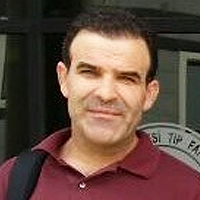A Rare Coexistence: Breast Cancer, Pheochromocytoma and Von Recklinghausen Disease
Published on: 11th December, 2023
Breast cancer associated with type-1 neurofibromatosis is a rare clinical entity. These patients have a higher risk of developing various types of cancers, especially tumors derived from the embryogenic neural crest, such as pheochromocytoma. This publication aims to add to the literature a rare association between Type-1 Neurofibromatosis, breast cancer, and pheochromocytoma.We present a rare case of a 51-year-old Tunisian woman with neurofibromatosis who was diagnosed with breast cancer and pheochromocytoma. The breast tumor was classified as T4b N1M0, and the discovery of the pheochromocytoma was incidental to thoracic-abdominal-pelvic CT. She underwent surgery to remove the adrenal gland and was referred to medical oncologists to receive chemotherapy for her breast cancer. Type-1 Neurofibromatosis disorder is a benign disease but can expose patients to numerous neoplasms. The challenging diagnosis at an early stage can worsen the prognosis and make medical care more difficult.
Breast Cancer in Female
Published on: 22nd April, 2024
Anxiety is also a very common disorder, both in patients and their family members. Anxiety and stress can compromise the quality of life of cancer patients and their families. Feelings of anxiety and anguish can occur at various times of the disease path: during screening, waiting for test results, at diagnosis, during treatment or at the next stage due to concern about relapses. Anxiety and distress can affect the patient’s ability to cope with diagnosis or treatment, frequently causing reduced adherence to follow-up visits and examinations, indirectly increasing the risk of failure to detect a relapse, or a delay in treatment; and anxiety can increase the perception of pain, affect sleep, and accentuate nausea due to adjuvant therapies. Failure to identify and treat anxiety and depression in the context of cancer increases the risk of poor quality of life and potentially results in increased disease-related morbidity and mortality [1]. From all this we deduce the need and importance of dedicated psychological and psychiatric support for these patients within the Breast Unit. The fact that the psycho-oncologist who is dedicated to the care of patients with breast cancer must be an integrated figure in the multidisciplinary team of the Senological Center and not an external consultant is enshrined in the same European Directives that concern the legislation concerning the requirements that a Breast Unit must have in order to be considered a Full Breast Unit (Wilson AMR, et al. 2013).One of the most complex situations you find yourself dealing with is communication with the patient. This communication is particularly complex in two fragile subpopulations that are represented by women. [Menditto L. T (Tirannie) Cancer of the Breast. Am J Psychol & Brain Stud, 2023; 1(1):26-30].
Germline BRCA1 Mutation inSquamous Cell Carcinoma of Oesophagus: Driver versus Passenger Mutation
Published on: 2nd July, 2024
We report a rare case of 62-year-old South Asian women who visited the Molecular Pathology and Genomics Department for hereditary germline cancer genetic testing after being diagnosed with oesophageal cancer, reported as invasive keratinizing squamous cell carcinoma metastasized to the lymph nodes. Her personal history revealed that she was diagnosed with triple-negative breast cancer five years before oesophageal cancer. Germline cancer testing showed pathogenic variants in BRCA1 gene c.68_69delAG, which proved it a hereditary breast and ovarian cancer syndrome. She was started on PARP inhibitors but developed some secondary respiratory failure and succumbed to death. Less than 10 cases have been reported in the literature of the association of germline BRCA1 and Squamous cell Carcinoma – the esophagus. The article focuses on the probable pathogenesis of BRCA1 mutation with non-classic malignancies and the response of Poly adenosine diphosphate ribose polymerase inhibitors (PARP) inhibitors in such a scenario. We report an unusual manifestation of the BRCA1 gene with second primary oesophageal squamous cell cancer occurring five years later to triple-negative breast cancer.
A Review on Heavy Metals in Ecosystems, Their Sources, Roles, and Impact on Plant Life
Published on: 21st August, 2024
The presence of heavy metals (HMs) on Earth is essential to all forms of life. These metals are essential for plant and animal development but can have numerous negative effects on the living environment. In this review, we looked at where HMs come from, why they are harmful, and how they affect plants. Articles indexed in Google Scholar, PubMed, Research Gate, Science Direct, and a few books on heavy metals were consulted for this study. Heavy metals are essential for plant development and growth. According to this analysis, the hazardous effects of HMs are on the rise all throughout the globe, and this trend may be attributed mostly to human activity. Because of its impact on agricultural productivity and environmental changes, soil pollution caused by HMs is among the most crucial elements. Plants have evolved very sophisticated defense systems to deal with these environmental challenges. The threat that HM stress poses to plants has attracted a lot of attention worldwide because it could stunt agriculture’s long-term expansion. In spite of their importance for plants, this study found that HMs pose a significant threat to plant life. The novelty of this review lies in its detailed examination of both the beneficial and detrimental roles of HMs, providing a balanced perspective often overlooked in current literature. The significance of this work is underscored by its potential to inform sustainable agricultural practices and environmental management strategies, as it highlights the delicate balance required to harness the benefits of HMs while mitigating their risks. Despite their necessity for plant development, this review underscores the significant risks HMs pose to plant health and ecosystems.Less than 10 cases have been reported in the literature of the association of germline BRCA1 and Squamous cell Carcinoma – the esophagus. The article focuses on the probable pathogenesis of BRCA1 mutation with non-classic malignancies and the response of Poly adenosine diphosphate ribose polymerase inhibitors (PARP) inhibitors in such a scenario. We report an unusual manifestation of the BRCA1 gene with second primary oesophageal squamous cell cancer occurring five years later to triple-negative breast cancer.
Analysing Average Glandular Dose: A Comprehensive Study Comparing Digital Breast Tomosynthesis with Full-Field Digital Mammography in Oman
Published on: 31st March, 2025
Background: Full-field Digital Mammography (FFDM) is essential for the early detection of breast cancer. Digital Breast Tomosynthesis (DBT) has improved cancer diagnosis and reduced false positives in mammography . This study evaluated DRLs for FFDM and DBT at various ranges of Compressed Breast Thickness (CBT).Material and methods: We evaluated the parameters like Average Glandular Dose (AGD), kVp, mAs, Entrance Surface Dose (ESD), and CBT in a retrospective analysis of FFDM and DBT. We computed the mean, median, range, and 75th percentile for Craniocaudal (CC) and Mediolateral Oblique (MLO) views at various breast thicknesses.Results: The DRLs were 0.70 mGy to 2.55 mGy for FFDM and 0.94 mGy to 3.67 mGy for DBT for breast thickness in the range from 20 mm to 89 mm.Conclusion: This analysis revealed that DRLs were significantly lower than international benchmarks . Mammography radiation dose optimisation enhances diagnostic accuracy and patient safety.




